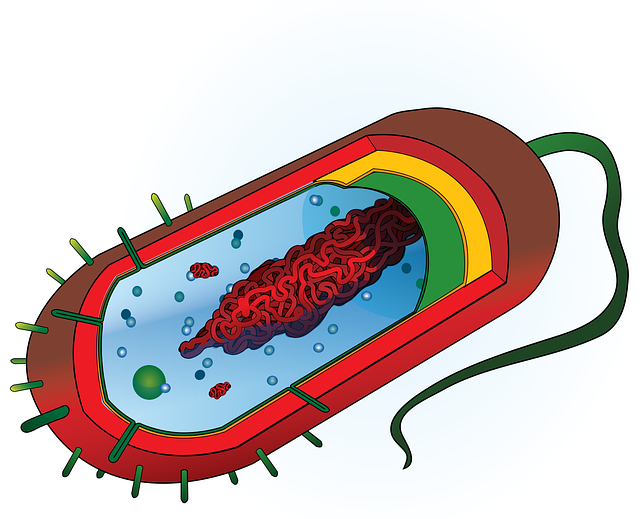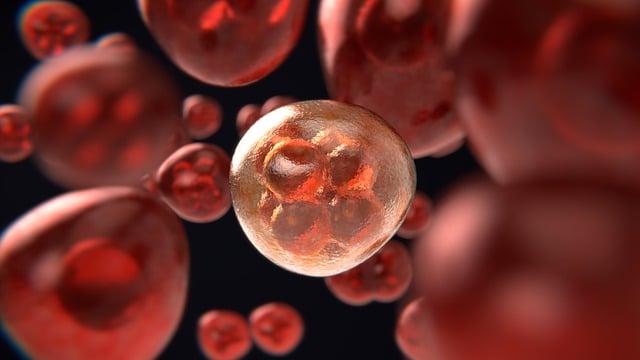Stem cell culture media, a carefully crafted blend of growth factors, cytokines, and antioxidants, is crucial for in vitro growth and maintenance of these versatile cells, mimicking their natural environment. Key components include IL-3, SCF (for hematopoietic stem cells), animal-component-free formulations to prevent xeno-contamination, and precise adjustments of oxygen tension, pH levels, and serum concentration. Optimizing media for specific stem cell types, like mesenchymal stem cells (MSCs), is essential for efficient growth, pluripotency maintenance, and therapeutic applications. This process involves tailored formulations, rigorous screening, and ethical considerations to address challenges in stem cell culture media optimization, ultimately paving the way for accessible and effective stem cell therapies.
“Stem cell therapy holds immense promise across various medical domains, and the role of stem cell culture media is pivotal. This article explores the intricate world of stem cell culture media, providing a comprehensive guide to its essential components and types. From understanding the basics to optimizing formulations for specific cells, we delve into strategies that drive effective stem cell growth. Furthermore, we examine challenges and future research directions in stem cell media, highlighting advancements that could shape this exciting field.”
- Understanding Stem Cell Culture Media: The Basics
- Components of Effective Stem Cell Growth Medium
- Types of Media for Different Stem Cell Applications
- Optimizing Media Formulation for Specific Cell Types
- Challenges and Future Directions in Stem Cell Media Research
Understanding Stem Cell Culture Media: The Basics

Stem cell culture media refers to the specialized nutrient solutions that support the growth and maintenance of stem cells in vitro. These media are carefully formulated to mimic the natural environment in which stem cells would typically reside, enabling their proliferation and differentiation. Understanding stem cell culture media is crucial for successful stem cell therapy, as the choice of media can significantly impact the health and functionality of cultured stem cells.
Key components of stem cell culture media include growth factors, cytokines, antioxidants, and essential amino acids. Animal-component-free stem cell culture protocols have gained popularity due to concerns regarding xeno-contamination and regulatory compliance. Specialized media for hematopoietic stem cells, for instance, often contain specific cytokines like interleukin-3 (IL-3) and stem cell factor (SCF) to promote the expansion of these particular stem cell types. When considering stem cell therapy media, factors such as oxygen tension, pH levels, and serum concentration must also be taken into account to ensure optimal cellular growth and functionality.
Components of Effective Stem Cell Growth Medium

An effective stem cell growth medium is a carefully composed cocktail of essential components that facilitate the optimal conditions for stem cell differentiation and proliferation. These include growth factors, cytokines, and other signaling molecules that mimic the natural environment in which stem cells thrive. The choice of these components significantly influences the quality and quantity of stem cells produced, making it crucial to select media tailored for specific applications.
Xeno-free stem cell culture systems, for instance, have gained prominence due to their potential to reduce immunogenic responses and avoid complications associated with animal-derived components. Serum replacement options in stem cell culture are also an area of active research, as they offer alternatives to fetal calf serum (FCS), providing consistent and defined compositions without introducing potential contaminants. Ultimately, the ideal stem cell culture media must balance these considerations while ensuring a nurturing environment for these versatile cells.
Types of Media for Different Stem Cell Applications

Stem cell therapy media plays a pivotal role in ensuring the successful application and proliferation of these versatile cells. Depending on the specific type of stem cells and their intended use, various media formulations have been developed to support their unique requirements. For instance, mesenchymal stem cell culture media often focuses on providing defined components for efficient proliferation, incorporating growth factors and cytokines essential for their maintenance.
Customized stem cell culture conditions are tailored to accommodate the specific needs of different stem cell types. This customization involves carefully selecting stem cell media formulations that include the right balance of nutrients, hormones, and signaling molecules. By optimizing these conditions, researchers aim to promote robust stem cell expansion while maintaining their pluripotency, ultimately enhancing the therapeutic potential for various applications.
Optimizing Media Formulation for Specific Cell Types

Optimizing the formulation of stem cell culture media is a meticulous process that varies depending on the specific cell type in question. Each cell line has unique requirements, including ideal nutrient profiles, growth factors, and supplements to support proliferation and differentiation. Researchers must carefully consider these needs when designing or selecting media for stem cell research, keeping in mind the ethical considerations surrounding media selection. For instance, certain components may need to be screened or excluded based on potential impact on cell health and research integrity.
Media formulations play a crucial role in determining the success of stem cell applications. Therefore, rigorous screening of different media types is essential to identify optimal conditions for specific stem cell lines. This involves evaluating factors such as cell viability, proliferation rates, and differentiation potential under various media conditions, ensuring that the chosen media supports robust and ethical stem cell research.
Challenges and Future Directions in Stem Cell Media Research

The advancement of stem cell therapy has presented an exciting prospect for medical science, but it also comes with its own set of challenges, especially in the realm of stem cell culture media. As research progresses, scientists are faced with the task of optimizing media formulations to support the complex requirements of various stem cell types. The development of efficient and ethical stem cell culture systems is crucial for translating lab-based research into viable therapeutic applications. One significant challenge lies in the diverse needs of different stem cells; for instance, mesenchymal stem cells (MSCs) require specific media components to facilitate their harvest and expansion while maintaining viability and pluripotency.
Future directions in stem cell media research should focus on addressing ethical considerations, particularly when selecting media for specific applications. Ensuring the quality control of stem cell research media is paramount to guarantee consistent outcomes. Researchers must consider the intricate interplay between media components, cell behavior, and functionality. By understanding these factors, scientists can design media formulations that promote optimal growth, differentiation, and overall stem cell potential. This, in turn, will accelerate the development of stem cell therapies, making them more accessible and effective for a wide range of medical conditions.
Stem cell therapy media is a dynamic field, crucial for advancing regenerative medicine. By understanding the basic components of effective growth mediums and optimizing formulations for specific cell types, researchers can unlock the full potential of stem cells. As we navigate the challenges and explore future directions in stem cell media research, the tapestry of possibilities for treating various diseases becomes ever more vibrant. Optimizing media plays a pivotal role in harnessing the power of these versatile cells, promising breakthroughs in healthcare.














